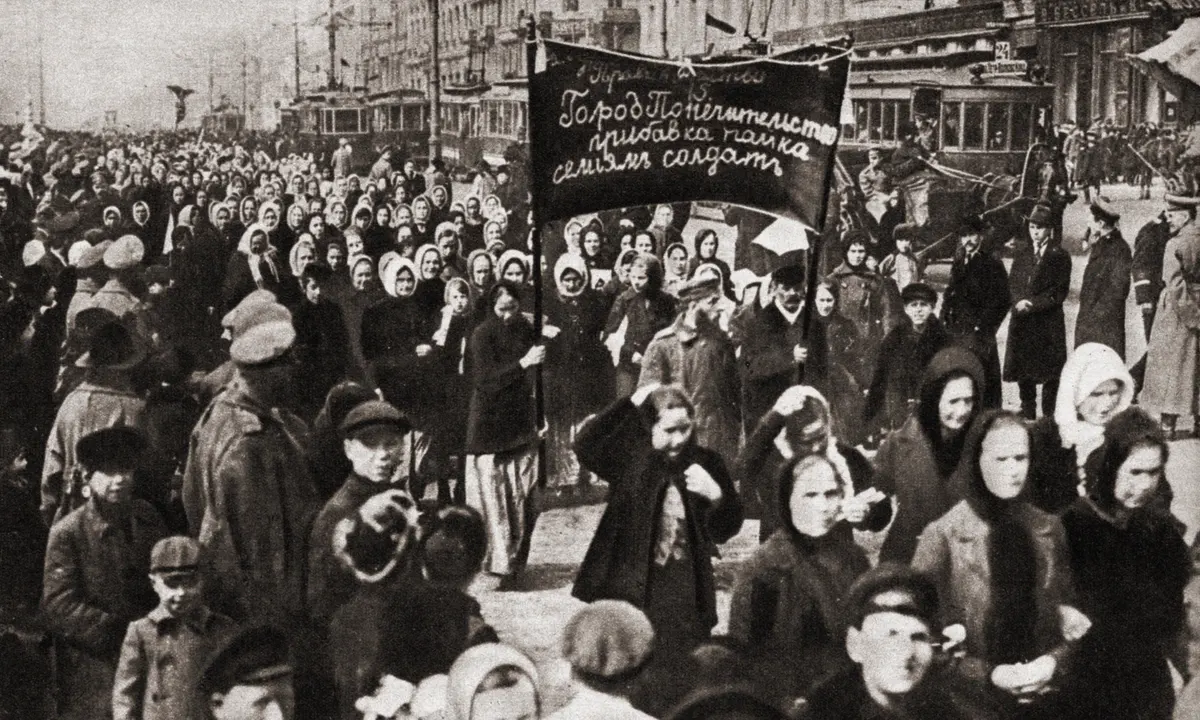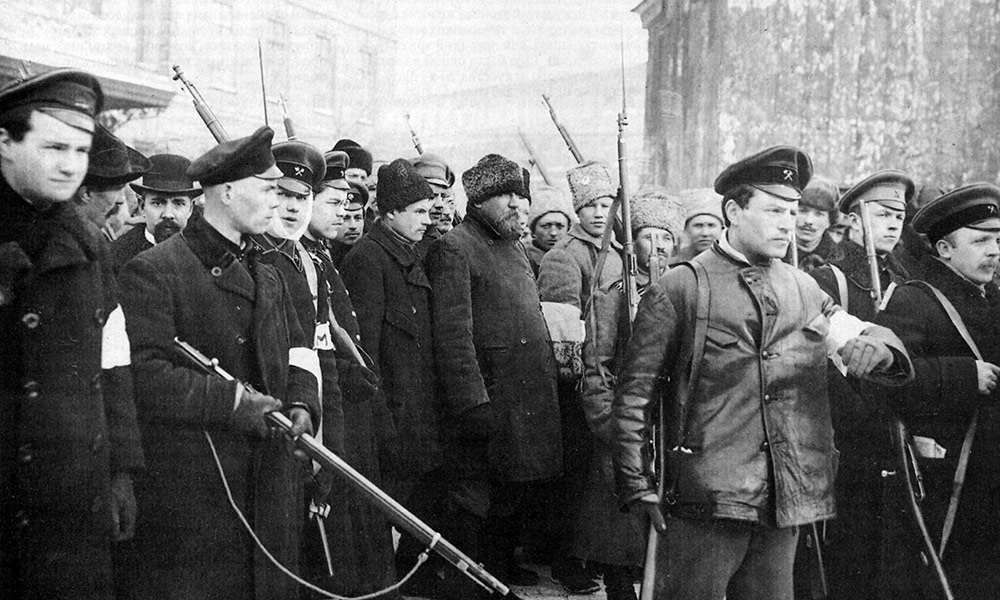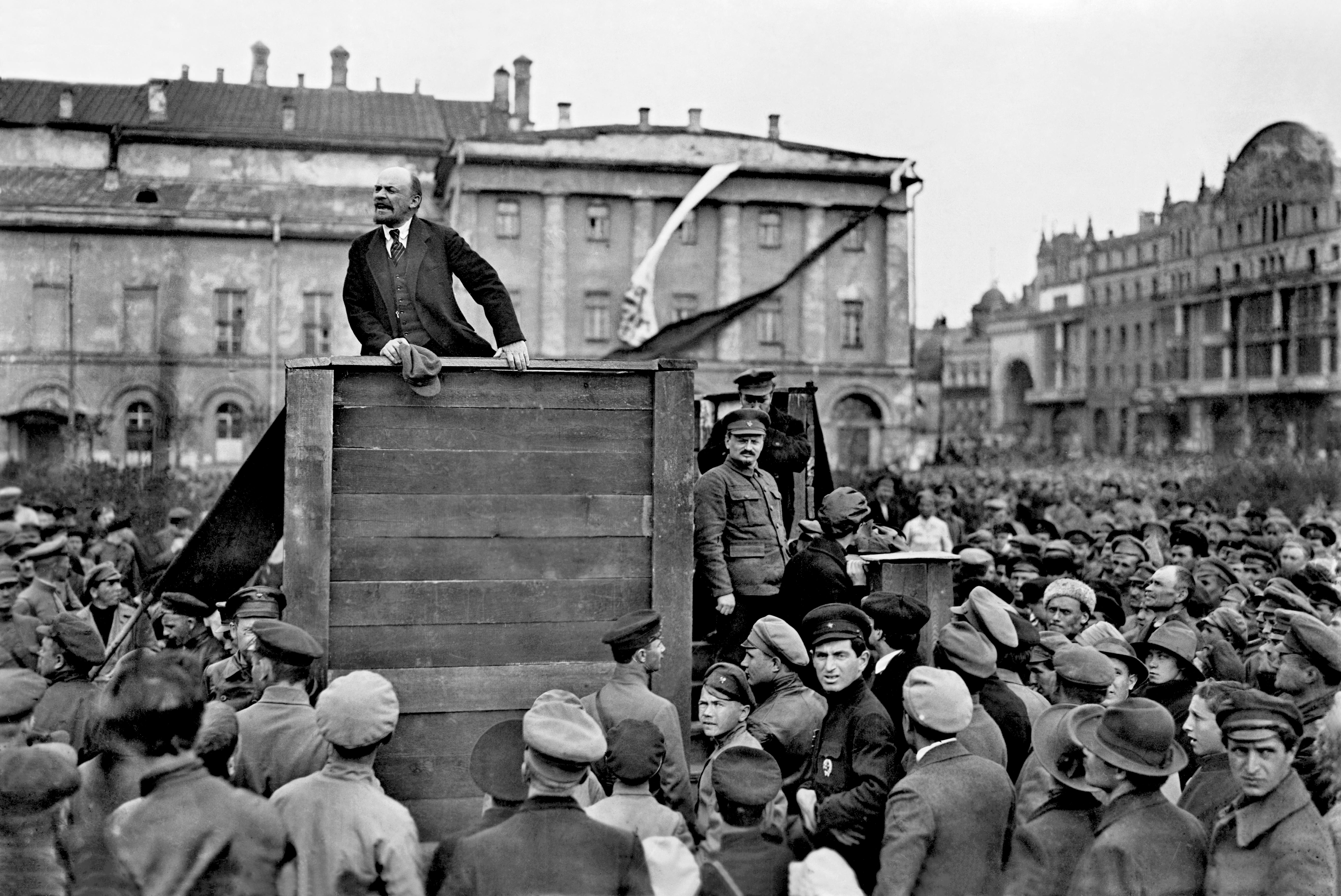The Spark to Light the Fire of Communism
All of the forces that had been building up for the past decades came to a head in 1917.
Beginning on the 22nd of February, the workers of Petrograd went on strike. As the revolution continued, more and more striking workers took to the streets, shutting down the factories and workplaces. The troops refused to quell the riots, and Tsar Nicholas abdicated himself and his son from the throne, ending the Tsarist regime.

February revolution, 1917, theguardian.com

Armed revolutionaries, November 7th, 1917, rochester.edu
After the February Revolution, a provisional government was created to keep the country running. This new government was almost as disliked as the Tsar’s regime, as it seemed to favor the upper class of the Russian society, refused to leave World War I, and failed to provide for the reasons the workers revolted in the first place. Eventually, the public turned to the radical Bolsheviks and their promise:
"Peace, Land, and Bread."
-Vladimir Lenin
At the time of all of this, Lenin was in exile in Germany. Germany realized that if a communist revolution was successful, Russia would leave the war. Germany decided to transport Lenin across the war-ridden Germany, on the promise he would lead a revolution and take over Russia. On November 6 and 7, Lenin and his Bolsheviks led a coup against the provisional government and took over Russia. Almost immediately, Lenin pulled Russia out of WWI, and made radical changes to the government, establishing the Communist Soviet Union.

Speech by Lenin, May 1920, wikipedia.org
"Let the 'socialist' snivelers croak, let the bourgeoisie rage and fume, but only people who shut their eyes so as not to see, and stuff their ears so as not to hear, can fail to notice that all over the world the birth pangs of the old, capitalist society, which is pregnant with socialism, have begun."
-Vladimir Lenin